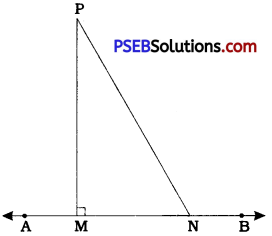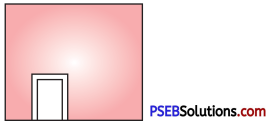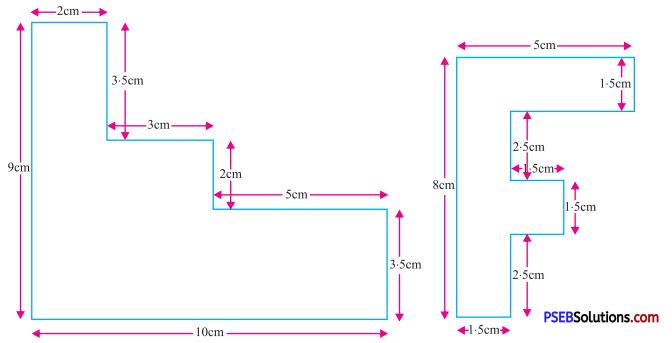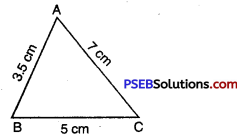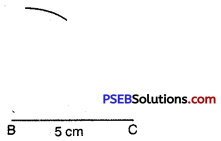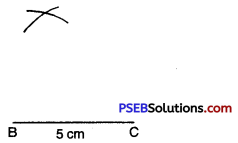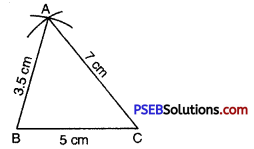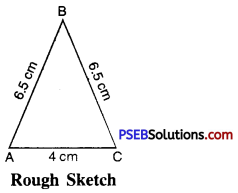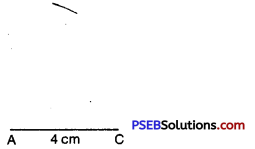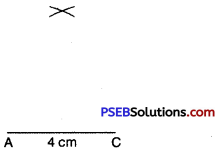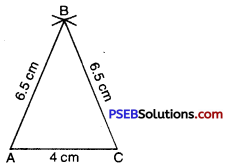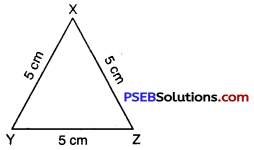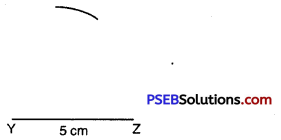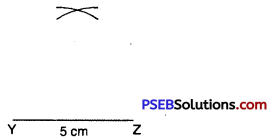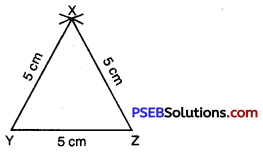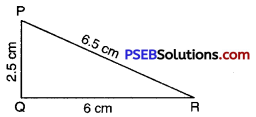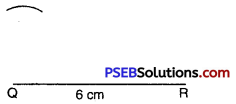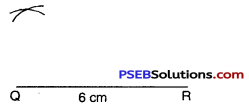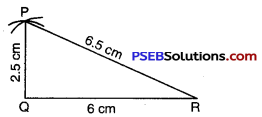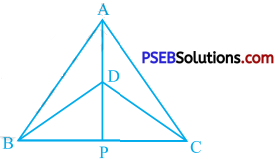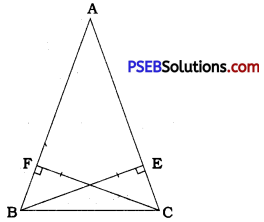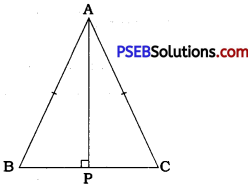Punjab State Board PSEB 7th Class English Book Solutions English Reading Comprehension Conversation / Dialogue Based Exercise Questions and Answers, Notes.
PSEB 7th Class English Reading Comprehension Conversation / Dialogue Based
Read the following conversation carefully and answer the questions that follow:
1. Akbar : Birbal make me a painting. Use your imagination in it.
Birbal : I am not an artist, how can I paint ?
Akbar : If I don’t get a good painting, you shall be punished.
Birbal : (Next day) I am here with the painting.
Akbar : I am happy to see that you obeyed me. Please show me the painting.
Birbal : Huzoor, have a look. I am opening the covered frame.
Akbar : This painting is nothing but only ground and sky. There is a little grass on the ground. What is this?
Birbal : A cow eating grass, Huzoor!
Akbar : Where is the cow and grass ?
Birbal : I used my imagination. The cow ate the grass and returned to its shed.
Question 1.
The given conversation is between ……………
(a) Birbal and Begum
(b) Birbal and his Son
(c) Akbar and his Son
(d) Akbar and Birbal.
Answer:
(d) Akbar and Birbal.

Question 2.
What did Akbar want Birbal to make for him?
(a) a cake
(b) a painting
(c) a dish
(d) all of the above.
Answer:
(b) a painting.
Question 3.
Who ate the grass ?
(a) cow
(b) cat
(c) camel
(d) goat.
Answer:
(a) cow.
Question 4.
What was in the painting ?
(a) ground and sky
(b) boy and sky
(c) girl and kite
(d) cat and dog.
Answer:
(a) ground and sky.
Question 5.
Birbal carried a ……………. with him.
(a) covered glass
(b) covered frame
(c) covered bowl
(d) covered box.
Answer:
(b) covered frame.
2. Sadab : Good afternoon.
Ritu : Good afternoon.
Sadab : So, where are you going now?
Ritu : I am going to meet my friend Garima in Kolkata Market.
Sadab : Oh, so nice, I have to buy a new school uniform.
Ritu : Will you accompany me ?
Sadab : Yes, it will be great fun for me.
Ritu : So, can we move now so that we can reach on time.
Sadab : Sure.
Question 1.
This conversation is between ………..
(a) Sadab and Garima
(b) Ritu and Garima
(c) Ritu and Sadab
(d) Garima and Kolkata Market.
Answer:
(c) Ritu and Sadab.
Question 2.
Where is Ritu going ?
(a) to meet her sister Garima
(b) to meet her friend Garima
(c) to meet her teacher
(d) to buy a school uniform.
Answer:
(b) to meet her friend Garima.
Question 3.
Garima will be found ……………
(a) in Kolkata market
(b) in Bombay market
(c) in Kolkata street
(d) in Sadab market.
Answer:
(a) in Kolkata market.
Question 4.
What does Sadab want to buy ?
(a) some new books
(b) a new mobile phone
(c) a new school uniform
(d) new shoes.
Answer:
(c) a new school uniform.
Question 5.
What was the time of conversation ?
(a) early morning
(b) afternoon
(c) late evening
(d) night.
Answer:
(b) afternoon.
3. Headman Ant asked, “What happened ? Why are you running ?” Rabbit said, “We’re running for our lives. I heard the news of Tsunami, very high sea waves.”
Headman Ant asked everyone to stay calm and explained that they were just testing the warning system. It didn’t happen for real. Let us all be prepared to deal with disasters.
Next day at the village meeting, everyone gave their ideas.
Elephant : “We should always follow news carefully.”
Butterfly : “I have already put my valuable things away in a safe place.”
Rats : “I have prepared survival bag which will always be close to me. I have kept a bottle of water, medicines, dried food, some beans, the radio for news and a family photo.”
Mother Frog : “My kids will not go out to play by themselves in hazardous places.”
Mother Goat : “We must run to higher grounds or to the safe areas. I shall make a map of the village.
Headman Ant : “Why didn’t you run like asked Grandpa others ?
OX : ……..
Grandpa OX : “We are too old. We don’t want to be a burden to anyone.”
Headman Ant : (said politely) “No one is a burden. What would your grandchildren do without you ??
Question 1.
Rabbit was running for life because he had heard the news of ……………
(a) Earthquake
(b) Tsunami
(c) Flash flood
(d) Land slide.
Answer:
(b) Tsunami.

Question 2.
What did the Headman Ant tell the animals about the news ?
(a) It was real
(b) It was to create panic only
(c) It was not real
(d) It was to entertain the old people.
Answer:
(c) It was not real.
Question 3.
Who is most careful about news ?
(a) Grandpa Ox
(6) Rabbit
(c) Elephant
(d) Frog.
Answer:
(c) Elephant.
Question 4.
Which one of the following is not true according to the conversation ?
(a) The elephant was not present at the meeting
(6) Grandpa Ox does not want to be a burden to anyone
(c) Mother Goat wants to run to the higher places
(d) Rats have prepared survival bags.
Answer:
(a) The elephant was not present at the meeting.
Question 5.
Tsunami is a ……………..
(a) safe place from high sea wave
(b) very high sea wave
(c) cool breeze coming from sea
(d) dry wind blowing towards sea.
Answer:
(b) very high sea wave.
4. Ali : Hello ! I’m Ali. What’s your name?
Ravi : Hello ! My name’s Ravi. I’m ten years old.
Ali . : I’m ten, too. Do you play cricket ?
Ravi : Not very well. I’m fond of football.
Ali : Oh, good ! Will you help me with my homework?
Ravi : Of course, I will. Come to me during the break.
Ali : Thanks. I’ll help you play cricket.
Ravi : That will be great. Thank you !
Ali : : Where do you live ?
Ravi : I live near the school and Ali, where do you live?
Ali : I live in the school hostel.
Question 1.
What is common between Ali and Ravi ?
(a) both are ten years old
(b) both play cricket very well
(c) both live in the school hostel
(d) both are fond of playing football.
Answer:
(a) both are ten years old.
Question 2.
Where does Ali live ?
(a) near the school
(b) in the school hostel
(c) near the football club
(d) near the cricket club.
Answer:
(b) in the school hostel.
Question 3.
Ali will help Ravi ……………
(a) play football
(b) do his homework
(c) play cricket
(d) all the above.
Answer:
(c) play cricket.
Question 4.
Ravi will help Ali ………
(a) play cricket
(b) play football
(c) do his homework
(d) none of these.
Answer:
(c) do his homework.
Question 5.
When will Ravi help Ali with his homework?
(a) after playing cricket
(b) after playing football
(c) when the school starts
(d) during the break.
Answer:
(d) during the break.

5. Ravi : Do you know what time it is now, please ?
Aman : No, I’m really very sorry, I don’t have a watch.
Rama : Could you tell me the time, please ?
Radha : It’s about eleven-thirty.
Rama : Thanks a lot.
Radha : At what time do you come to school ?
Rama : At 8:30 in the morning.
Radha : At what time does the school get over ?
Rama : At 3 o’clock in the afternoon.
Ajay : What time is the next bus, please ?
Anil : It leaves at 5:30 p.m.
Ajay : Is there any bus after 10 p.m. ?
Anil : The last bus leaves at 10:30 p.m.
Ajay : Thanks a lot for the information.
Question 1.
The main point in this conversation is …………… .
(a) bus
(b) time
(c) watch
(d) school.
Answer:
(b) time.
Question 2.
Aman is unable to tell Ravi time because …………….
(a) he is in a hurry
(b) he is very sorry
(c) he has no watch
(d) he has no clock.
Answer:
(c) he has no watch.
Question 3.
When does Rama go to school ?
(a) at 8:30
(b) at 3 o’clock
(c) at 11:30
(d) at 10 o’clock.
Answer:
(a) at 8:30.
Question 4.
What does Ajay want to know ?
(a) times about school
(b) times about buses
(c) time by Aman’s watch
(d) none of these.
Answer:
(b) times about buses.
Question 5.
Who tells Ajay time for last bus ?
(a) Rama
(b) Anil
(c) Radha
(d) Aman.
Ans.
(b) Anil.
6. Raj : Could you help me, please ?
Shopkeeper : Certainly.
Raj : Thank you.
Shopkeeper : What can I get you ?
Raj : A black shoe polish.
Rani : Excuse me please, where are the pens ?
Shopkeeper : They are in the second row. Let me help you.
Rani : How much do the two pens cost ?
Shopkeeper : The price is written on them. They cost Rs. 10 each.
Rani : Thank you.
Question 1.
Whose help does Raj ask for ?
(a) Rani’s
(b) shopkeeper’s
(c) nobody’s
(d) his own.
Answer:
(b) shopkeeper’s.
Question 2.
Raj wants to buy a ……………..
(a) brown shoe polish
(b) black shoe polish
(c) some pens and a polish
(d) none of these.
Answer:
(b) black shoe polish.
Question 3.
The pens are lying
(a) in a box
(b) in the first row
(c) in the second row
(d) on the upmost shelf.
Answer:
(c) in the second row.

Question 4.
How many pens does Rani want to buy ?
(a) two
(b) three
(c) one.
(d) four.
Answer:
(a) two.
Question 5.
How much do the two pens cost ?
(a) Rs. 20
(6) Rs. 10
(c) Rs. 30
(d) Rs. 15.
Answer:
(a) Rs. 20.
7. Aryan : Why are you wearing this funny dress, Praveen ?
Praveen : Aryan, what is funny about it?
Aryan : Look at your clothes ! They look so tight, and your shoes have wheels. And what’s that you have on your head ?
Praveen : (laughs) Oh, are you talking about this dress ? I’m going for my skating class and this is my helmet to save me from injuries.
Aryan : Skating ?
Praveen : Yes, skating. That’s why I’m wearing these roller skating shoes.
Aryan : Where are you going for your skating class ?
Praveen : I’m going to the ‘Roller Mall’. It has a skating rink.
Aryan : Could I come with you to see what you do there?
Praveen : Sure, come along. (They reach the skating rink.) Aryan (amazed) Oh, so many people moving on the wheels !
Praveen : They’re all skaters moving on roller skates.
Aryan : Look ! How they all are gliding on the floor. I wish I could do the same. Will you teach me how to skate ?
Praveen : Oh yes, whenever you are ready.
Aryan : Thanks.
Question 1.
Praveen’s dress looks funny to Aryan. Why?
(a) It is very tight.
(b) His shoes have wheels.
(c) There is a, helmet on his head.
(d) all these.
Answer:
(d) all these.
Question 2.
Praveen is going to …………
(a) his school to take part in a drama
(b) a park for a picnic
(c) perform a magic show
(d) his skating class.
Answer:
(d) his skating class.
Question 3.
A helmet saves us from …………
(a) foot injuries
(b) severe cold on ice
(c) head injuries
(d) all the above.
Answer:
(c) head injuries.
Question 4.
What does Aryan want to learn ?
(a) skating
(b) use of wheeled shoes
(c) using a helmet
(d) wearing a tight dress.
Answer:
(a) skating.

Question 5.
Who will teach Aryan how to skate ?
(a) skating teacher
(b) his elder brother
(c) Praveen
(d) class teacher.
Answer:
(c) Praveen.
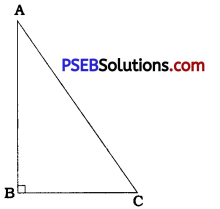
![]()
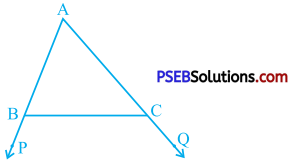
![]()
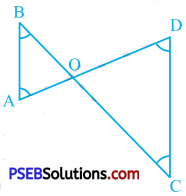
![]()
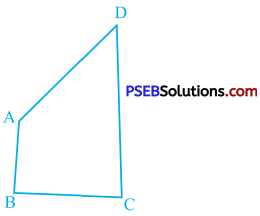
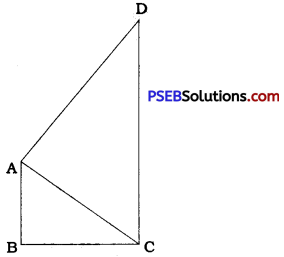
![]()
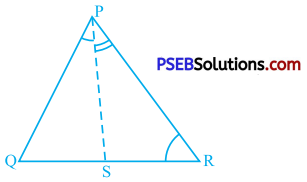
![]()
